Abstract
The pivotal process in gene-culture coevolution is envisaged to be the evolution of behavioral epigenesis. From premises based on the known properties of enculturation and usage diffusion within societies, a probabilistic model is constructed to estimate the degree to which rules governing individual development canalize ethnographic curves (the probability density distributions of societies engaged in varying patterns of usage). The results indicate that under most conceivable conditions the translation from individual epigenesis to social pattern is amplified, to an extent that differences in bias too faint to be detected in ordinary developmental studies can generate conspicuous variation in the ethnographic curves. Examples are cited of sufficiently biased epigenesis in human behavior.
Keywords: human sociobiology, social development, gene-culture coevolution
Full text
PDF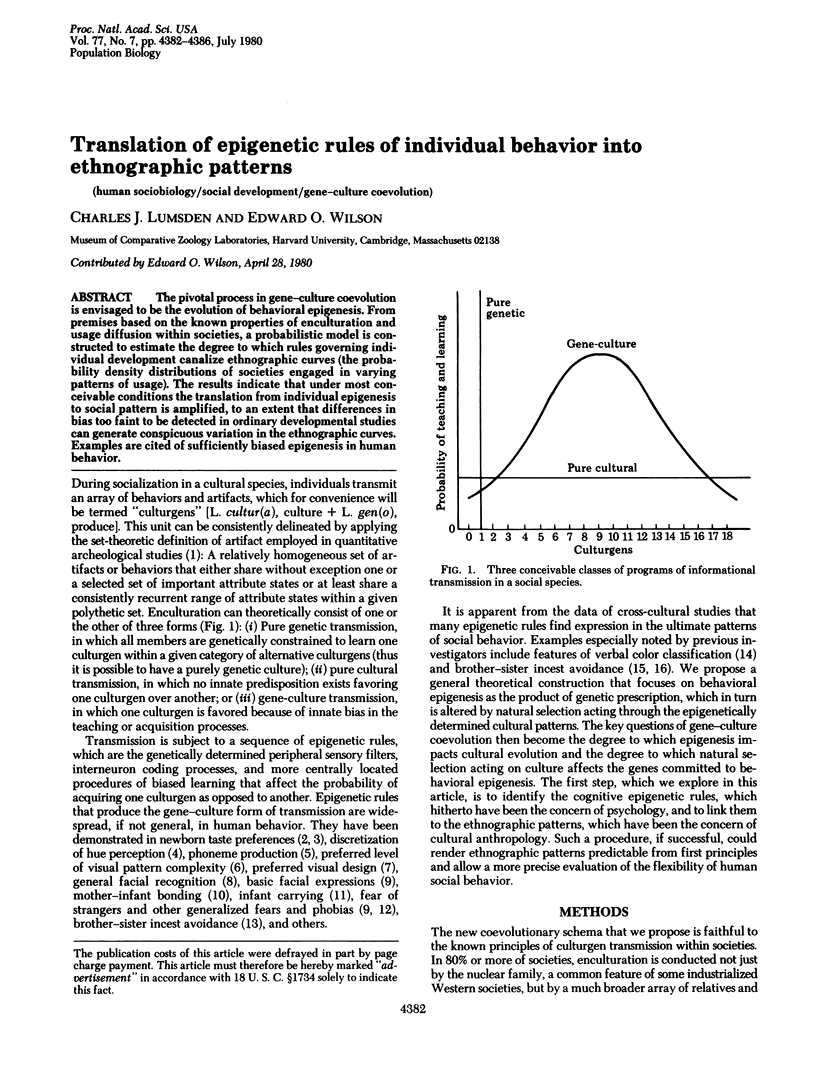
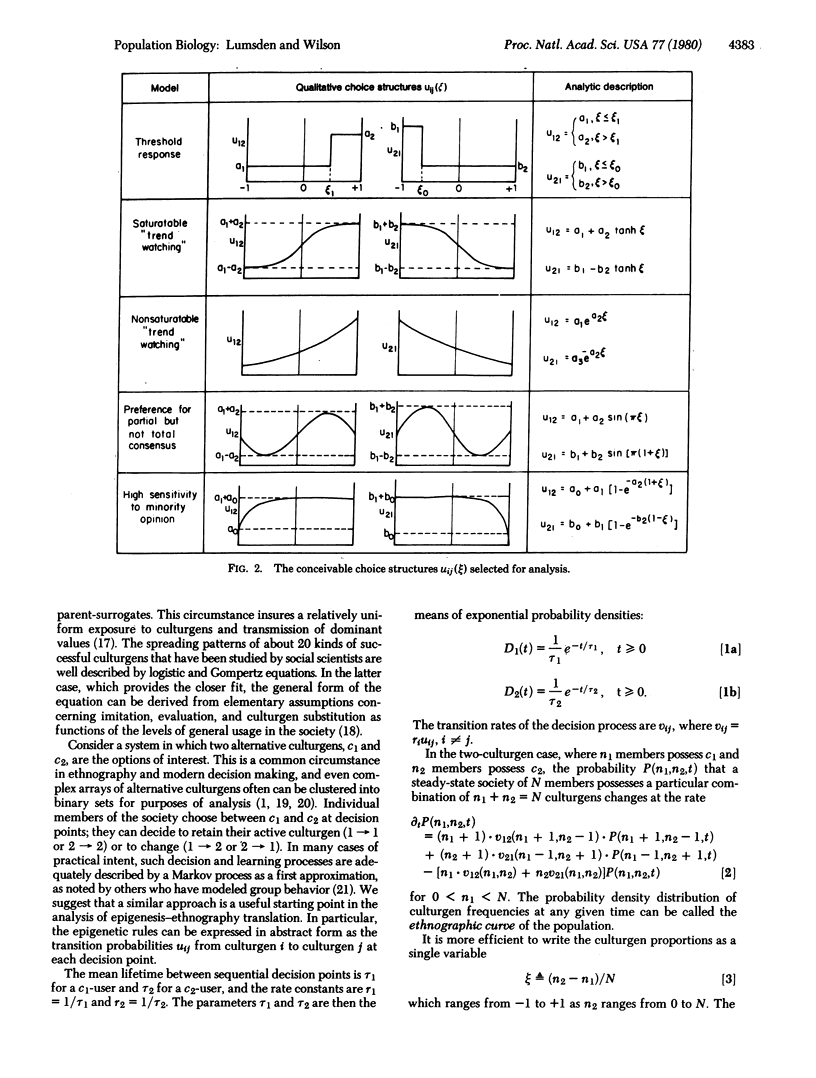
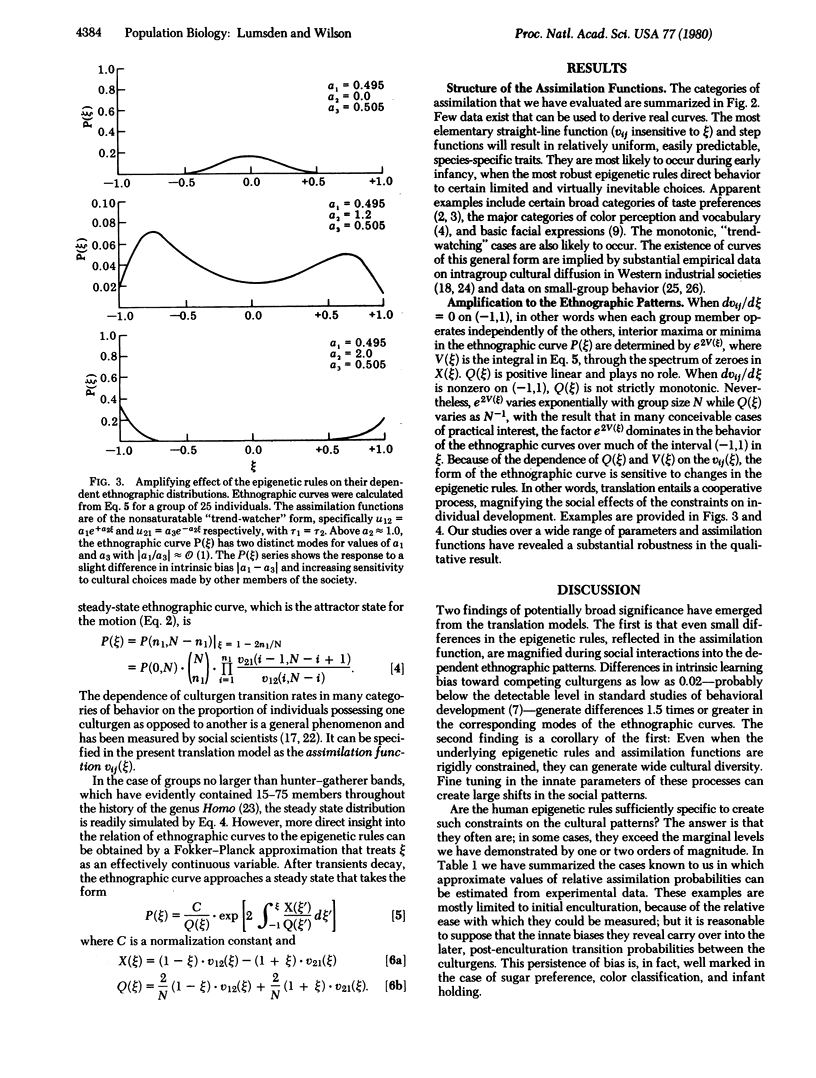
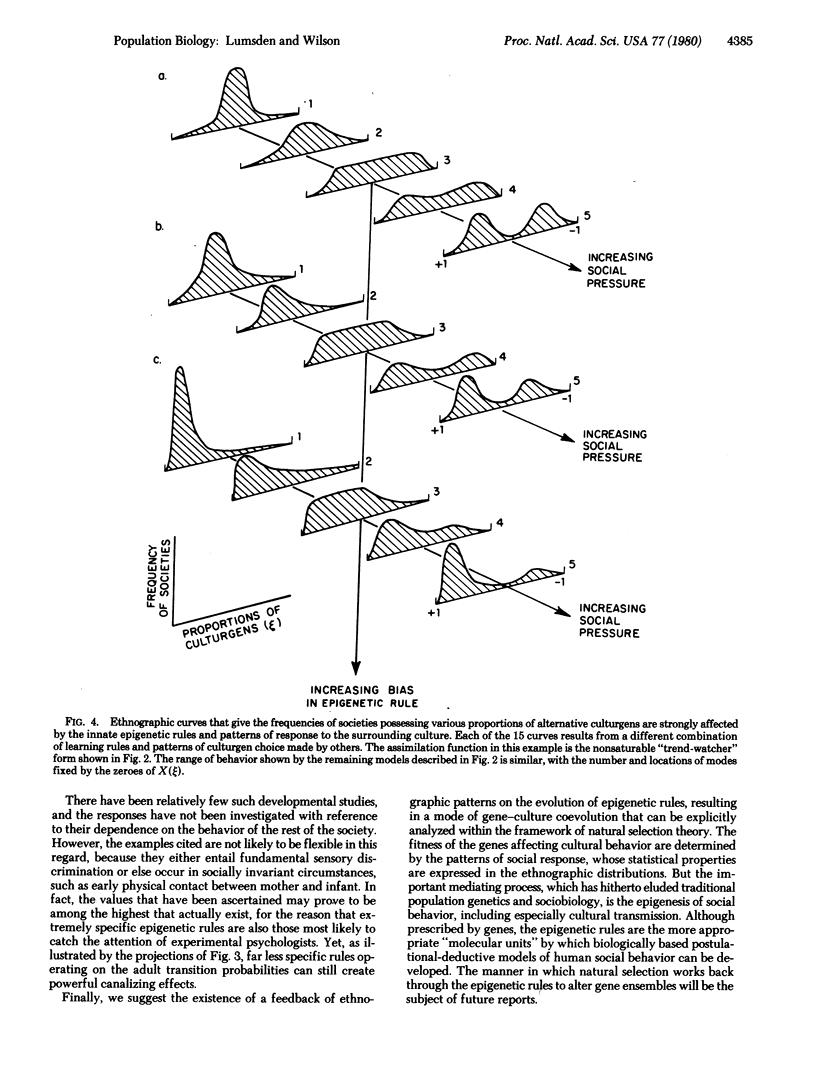
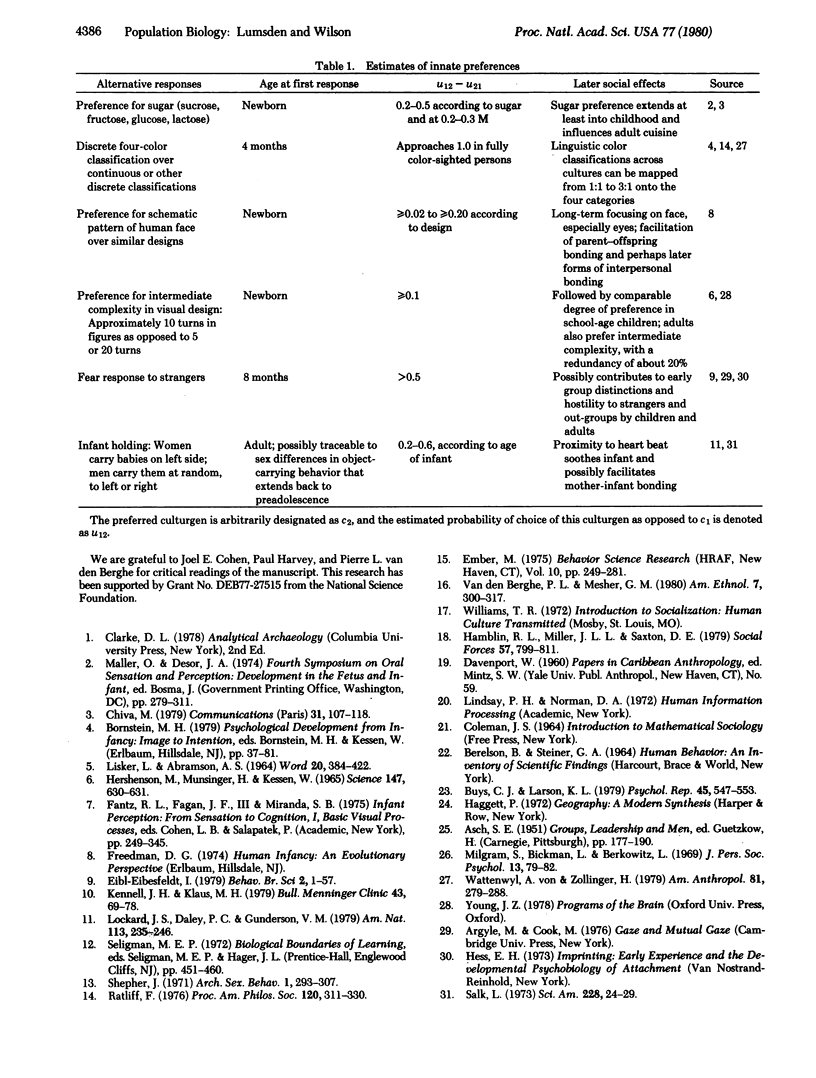
Selected References
These references are in PubMed. This may not be the complete list of references from this article.
- HERSHENSON M., MUNSINGER H., KESSEN W. PREFERENCE FOR SHAPES OF INTERMEDIATE VARIABILITY IN THE NEWBORN HUMAN. Science. 1965 Feb 5;147(3658):630–631. doi: 10.1126/science.147.3658.630. [DOI] [PubMed] [Google Scholar]
- Kennell J. H., Klaus M. H. Early mother-infant contact. Effects on the mother and the infant. Bull Menninger Clin. 1979 Jan;43(1):69–78. [PubMed] [Google Scholar]
- Salk L. The role of the heartbeat in the relations between mother and infant. Sci Am. 1973 May;228(5):24–29. doi: 10.1038/scientificamerican0573-24. [DOI] [PubMed] [Google Scholar]


